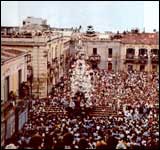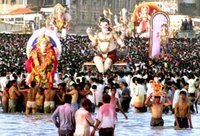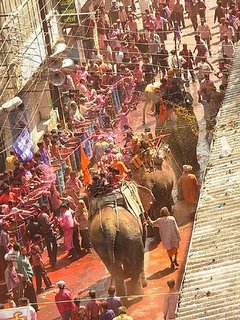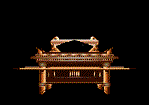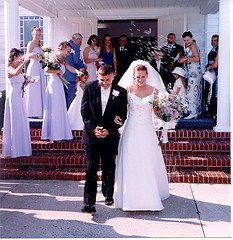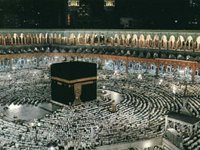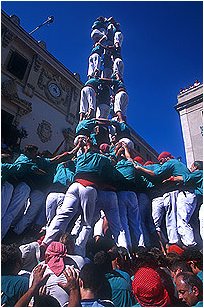Italy 1485
The painting of religious portraits on the outside walls of homes, especially thoses of stucco, was custonary durning the fifteenth centery as it is today in many Eurpope cities. In Trevi this artwork was assigned to students of a nearby school conducted by Pietro Vannucci, a master painter.
The moddest home of Diotallevi d'Antonio Santilli, locatated on the road between Spopeto and Trevi, wad similarly decorated when a portrait of the Madonna was painted on the outside wall on October 4, 1483 the feastday of St. Francis of Assisi.
The miracle of the tears took place two years later, on Auguest 5, 1485. On that day a passerby nticed moisture on the wall and discovered that it originated from the eyes of the Madonna. These were no ordinary tears, but those of blood. One can only imagine the excitement this event created. Neighbors flocked to the house to see the prodigious occurrences of blody tears falling from the eyes of a Madonna painted on a stucco wall. new spread quickly to people in nearby villages: they likewise hurried to the house to see the miracle of the bloody tears. Disbelivers and skeptics came and were convinced. Many of thehese doubters and others recieved spirtiual graces and miracles of healing.
A notary of Trevi was alerted and he, too, rushed to the scene. He described the prodigy in writing and recounted all the miracles that he witnessed. His document, as well as other official records that were made by the municipal authorities, can be found in the archives of the City of Trevi.
Also preserved is another contemporary account of the miracle and the origin of the shrine. This was written by Fr. Francesco Mugnoni, an Olivetan, who resided a short distance from the house of the miracle.
The reason for the tears was a matter of great concern and speculation until it was finally decided that they represented the sympathy of the Madonna for the pestilence which for years had tormented the territory around the city of Trevi.
On August 21, 1485 one week after the start of the miracle, the first Holy Mass was offered in the small chapel that had been hastily erected near the wall of the Madonna. Permission was soon received for a daily Mass to be offered in this little improvised chapel. Because space was inadequate from the start, plans were soon made to replace the chapel with a magnificent building worthy of the Mother of God. Monies were collected, and work was begun on March 27, 1487.
The community entrusted the building to Antonio Marchisi of Settignano. The magnificent portal and stonework were designed and executed by John di Giampietro of Venice. The interior was beautified with the paintings of pietro Vannucci, who conducted the school of art in Trevi. The sculptures are credited to Giovanni of Carrara.
When the church was completed, the portion of the wall that was covered with the portrait of the Madonna was cut from the wall of the house and removed to the church, where it now receives the admiration and attention of the Madonna's devotees.Soon a house for religious was built near the church. First entrusted to the Olivetans, it was later occupied in turn by various religious orders.
Always regarded as the patroness of the city, the Madonna of the Tears was officially designated as such on July 26, 1846.The shrine has been enriched with many ex-votos which signify the numerous benefits conferred upon the people of the city and visiting pilgrims through the intercession of the Madonna of the Tears. One of the most outstanding of these tributes is a relief in silver depicting the City of Terni, which was presented in thanksgiving for the deliverance of that city from the plague.
The feast of the Madonna is celebrated on the Sunday after Easter.
Australia 2003
Oily tears began flowing from the fibreglass statue last year on March 19 - the feast of St Joseph - and again over the four days of Easter. The rose-scented tears then seeped continually from August 14 - the feast of the Assumption of Our Lady into Heaven - but stopped on January 10.
The statue was placed in the parish church at Rockingham, where it attracted more than 2000 worshippers every weekend. Many came from interstate and overseas and, according to the archdiocese's director of communication, Hugh Ryan, "there were stories about people being cured or helped", including one case of cancer. However, these claims have not been investigated.
After various scientific tests found no apparent cause for the tears, the Archbishop of Perth, Barry Hickey, said in November that an independent panel would investigate. The panel, comprising a non-Catholic microbiologist, a Catholic surgeon and a Catholic academic, arranged tests before Christmas.
Their report is ready, but Mr Ryan was not sure last night whether the archbishop had received it.
Earlier, a Perth television program commissioned tests at two Perth universities, which could not uncover human agency but could not disprove it either.
The 70-centimetre statue was bought in Bangkok eight years ago by Patty Powell of Rockingham, who has denied causing the tears. She declined to comment yesterday.
India 1995
Bombay, like several other parts of the country, was today swept by rumours that idols of the god Ganesh were accepting offerings of milk.
Thousands of devotees of the elephant god who visited temples for the morning pooja claimed that the deity actually drank the milk offered to it. However, not all idols were said to have obliged.
The word spread like wildfire as excited people thronged temples to witness the miracle. Some were overwhelmed with emotion, others dismissed it as a hoax.
Prominent astrologer and Ganesh devotee Jayant Salgaonkar said: "I myself witnessed it. I went early this morning to the Siddhivinayak temple at Prabhadevi, Ganeshji drank the milk."
Scientists at the Indian Institute of Technology and the Tata Institute of Fundamental Research refused to comment on "such religious matters." On the other hand, a leading rationalist in Calcutta, Prabir Ghosh, called it absurd. "I can prove that it is no miracle".
Miracle or not, there were long serpentine queues outside temples in Calcutta, Delhi, Madras and Ahmedabad, leading to traffic bottlenecks at several places.
Said a senior government official of West Bengal: "I have been trying to get through to Writer's Building for three hours. But the mass frenzy over Ganesh remains unabated."
Chaos prevailed in Delhi's temples and out on the streets as devotees jostled one another to offer milk to Ganesh, Parvati and Shiva. Some even claimed that the idols drank a bucketful of milk.
In Madras, devotees who patiently held sweetened milk in silver spoons at the trunk of the god, said that the milk disappeared within minutes. Ms Shalini Binani, 16, who said that she had heard about the incidents from an aunt in Calcutta, tried about the incidents from an aunt in Calcutta, tried offering milk in a stainless steel spoon, but the idol did not respond. However, she claimed, when the milk was offered in a silver spoon, it was accepted.
By noon, newspaper offices in Bombay were flooded with calls inquiring about the veracity of the claims. Other callers narrated their "experiences" in temples or at home.
"I was performing a Ganesh pooja early this morning," said Mr Ravindra Mahadeo Rahate, an employee of the Bank of India. "Suddenly I realised that the milk I had offered was disappearing slowly." Surprised by this development, Mr Rahate offered the deity some more milk. "That too disappeared," he claimed.






